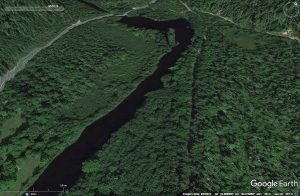The Nature Conservancy of Canada (NCC) has expanded its conservation area on the Musquodoboit River by 67 hectares (166 acres) to protect important habitat for several species of at-risk turtles and migratory birds. NCC has added two new properties and now protects 214 hectares (528 acres) of floodplain, wetlands, mature forest and rare trees on the lower Musquodoboit River.
The Musquodoboit River provides rich habitat for a wide diversity of species, including several federally listed species at risk [SAR]: wood turtle, snapping turtle, Canada warbler, chimney swift, common nighthawk, rusty blackbird and olive-sided flycatcher. The Musquodoboit River has one of the best remaining runs of Atlantic salmon on Nova Scotia’s eastern shore, and provides habitat for sea-run brook trout. Wood duck, common merganser and other waterfowl also live and breed here. NCC’s lands include extensive frontage on the Musquodoboit River, and support a red oak and black cherry floodplain forest, which is uncommon in Nova Scotia.
Read more in the NCC Press Release
Zack Metcalfe talked to Craig Smith, Program Director of the Nova Scotia branch of the Nature Conservancy of Canada about the acquisitions. From Zak’s article in the CH (July 31, 2017)
Smith describes this waterway as both ecologically rich and geologically fertile, making it an early target for agriculture, gypsum mining and more recently forestry. While many of these industries have taken their toll, aspects of the Musquodoboit’s riverside ecosystem remain whole, particularly south of the Crawford Bridge for a 20-25-kilometre stretch. It’s here, three years ago, that the NCC began its reservational work.
“There’s a lot of wildlife diversity in a very small area,” said Smith, referring specifically to this stretch’s intact wetlands as well as its floodplain forests of black cherry and red oak, a combination difficult to come across in Nova Scotia…
As this reserve expands and its trails lengthen, Smith is enthusiastic about its recreational potential. He said it can host anything from light strolls to mountain biking, from kayak rides to bushwhacking.
In time he hopes it will connect with the nearby White Lake, Ship Harbour Long Lake and Tangier Grand Lake wilderness areas, forming a network as important to wildlife as to visitors.
Read more in Musquodoboit nature reserve will benefit people, wildlife (Zak Metcalfe in CH, July 31, 2017)
There are many winners coming from this ongoing effort by the Nature Conservancy of Canada. Thanks NCC and families who have kept these lands the way they are today.

